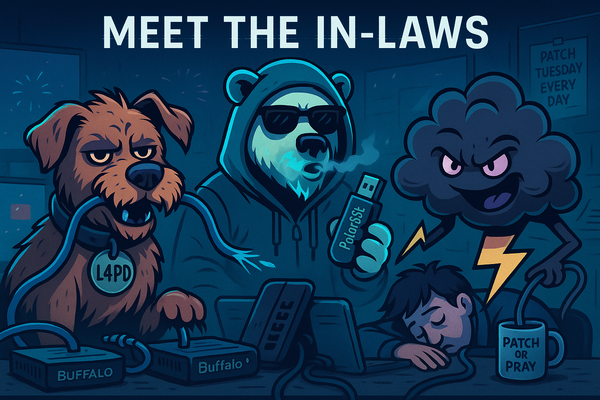Enhancing Cybersecurity Through Effective Vendor Management Programs
Vendor management programs are essential for organizations to manage risks associated with third-party vendors. These programs typically include components such as security questionnaires, contract language...

TL;DR
-
Continuous Monitoring: Continuous monitoring of vendors' security postures is crucial.
-
Automated Risk Assessments: Automating the risk assessment process helps in efficiently identifying and mitigating risks.
-
Robust Contract Language: Including specific security requirements in vendor contracts ensures that vendors are legally bound to maintain certain security standards.
-
Security Questionnaires: While security questionnaires are a common tool for assessing vendors, their effectiveness is limited if used in isolation.
-
Vendor Tiering and Segmentation: Categorizing vendors based on the level of risk they pose allows organizations to prioritize their risk management efforts.
Research Summary
Vendor management programs are essential for organizations to manage risks associated with third-party vendors. These programs typically include components such as security questionnaires, contract language, and audits. Effective vendor management can help organizations mitigate cybersecurity risks, ensure business continuity, and maintain regulatory compliance. This report reviews multiple sources to gather insights on the effectiveness of these programs and their components.
Continuous Monitoring
Continuous monitoring of vendors' security postures is crucial. It allows organizations to detect and respond to changes in vendors' security environments in real-time, thereby reducing the risk of incidents. This component is highly effective as it provides ongoing visibility into potential vulnerabilities.
Automated Risk Assessments
Automating the risk assessment process helps in efficiently identifying and mitigating risks. Tools that provide real-time, non-intrusive measurements of vendors' security performance are particularly effective. This approach reduces the reliance on manual processes, which are often time-consuming and error-prone.
Robust Contract Language
Including specific security requirements in vendor contracts ensures that vendors are legally bound to maintain certain security standards. This component is effective in setting clear expectations and accountability for vendors, thereby reducing the risk of non-compliance and security breaches.
Security Questionnaires
While security questionnaires are a common tool for assessing vendors, their effectiveness is limited if used in isolation. They are most effective when complemented with objective data and continuous monitoring.
Vendor Tiering and Segmentation
Categorizing vendors based on the level of risk they pose allows organizations to prioritize their risk management efforts. High-risk vendors receive more scrutiny and monitoring, which helps in mitigating potential threats more effectively.
Breaches and Case Studies
-
(2023-11-21) International Game Technology (IGT) Breach
- Description: IGT experienced a cybersecurity breach that disrupted portions of its internal IT systems and applications.
- Actionable Takeaways: Ensure continuous monitoring of vendors' IT systems and enforce robust incident response plans.
- References: Asia Gaming Brief
-
(2023-12-06) State of Missouri Vendor Risk Management Program
- Description: The State of Missouri implemented a new vendor risk management program aimed at mitigating known vendor risks by identifying compromised systems and unwanted user behavior.
- Actionable Takeaways: Implement comprehensive risk management programs that include continuous monitoring and automated risk assessments.
- References: NASCIO
-
(2024-12-20) Eye Care Leaders Ransomware Attack
- Description: A ransomware attack on a third-party vendor providing IT services to eye care practices led to significant data breaches.
- Actionable Takeaways: Continuous monitoring and strong contractual security obligations could have mitigated the impact of this breach.
- References: ComplyAssistant
-
(2024-10-12) Toyota Supply Chain Attack
- Description: A cyber attack on Toyota's supply chain highlighted the vulnerabilities in third-party vendor systems.
- Actionable Takeaways: Implementing robust due diligence and continuous monitoring are critical to prevent such incidents.
- References: ComplyAssistant
-
(2024-08-15) Okta Third-Party Data Breach
- Description: A data breach involving a third-party vendor compromised sensitive information of Okta's clients.
- Actionable Takeaways: Strong contractual security obligations and continuous monitoring could have reduced the risk.
- References: ComplyAssistant
Recommendations, Actions, Suggested Pivots, Forecasts and Next Steps..
(Subscribers Only)





